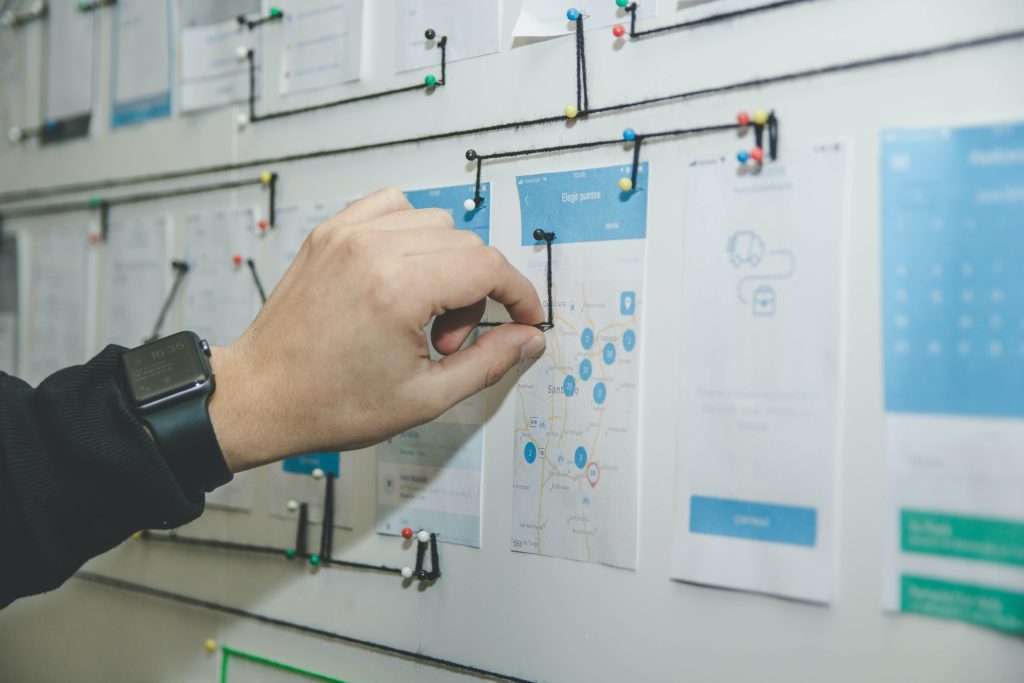Creating your own app seems to be one of the ‘rags to riches’ paths today. Just take one of the founders of Snapchat: Evan Spiegel became the youngest billionaire in 2015 thanks to creating this app. And his co-founder, Bobby Murphy, was named the second-youngest billionaire the same year as Spiegel!
But as enticing as this is, making an application isn’t as easy as 1-2-3. You need to think through the idea, make sure it’s viable, and round up your requirements and specifications. Then, of course, you have to take care of the design and coding themselves – and support and update the app after its launch.
But what does it take to create an app, exactly? Let’s break down nine key necessities.

1. Enough Time
Creating your own app takes time. Even the companies employing an army of developers can’t get it ready in a month. Development takes at least three months and, most often, amounts to between 6 months and a year.
So, if you’re a student working on a passion project alone, prepare to forget about the concept of free time for a while. It’ll be akin to having a part-time job, at best.
That’s why you must think about your ability to dedicate enough time to this project before you start coding. And if you think it’s impossible to make time, reexamine your most time-consuming activities.
Maybe, you can reduce your academic workload by turning to a professional essay writer to offload some homework? Or cut down on some classes? The choice is yours.
2. Great Initial Idea
You won’t get anywhere without a good idea for an app. Perhaps, you already have it. Or, maybe, you don’t. But what makes an idea good or bad when it comes to making apps?
Here are three main criteria that an idea should meet to be worth your time and effort:
- It should be unique enough to stand out;
- It hasn’t been done by anyone else – or it hasn’t been done well;
- It should be realistic enough to be implemented.
3. Thorough Market Research
Now, this step is crucial if you want to make a profit out of your app. To do that, you have to ask yourself: Is your idea economically viable?
Let’s say you want to create another app that would help students study better. But hundreds of similar apps already exist! How would your idea be any different? Will it be able to beat the competition and corner the niche?
When it comes to the market research, here’s the information you should gather and analyze:
- Your target audience: their demographics, needs, problems, and preferences;
- Your niche: the current and potential demand for apps like yours;
- Your direct and indirect competitors: their strengths and weaknesses.
4. Detailed Requirements
Once you verify that this idea is worth working on, you need to bring more detail to it. You need to move away from thinking in ideas to thinking in requirements:
- What platforms will this app work on (Android, iOS)?
- Would you prefer to get a native or a cross-platform app as a result?
- What features should be available to users?
- Which features are the core ones, and which are the optional, good-to-have kind?
- What are the user requirements (access level, languages, etc.)?
5. Realistic Development Plan
Once you’ve verified your idea, you need a plan – a development plan, that is. Here are six key stages of any development cycle that your plan should include:
- Analyzing the requirements;
- Creating the specifications that match those requirements;
- Coding itself (according to the pre-defined specifications);
- Testing, debugging, and quality assurance;
- Launching the product;
- Supporting and maintaining it after the launch.
You should also understand what methodology you want to follow. If you opt for Agile, for example, you’ll be working in short sprints. You will aim to have a ready-to-be-used product by the end of each iteration.
6. Right Skill Set
Let’s imagine you want to develop an app to track your learning progress all on your own. How do you know if you’re ready to write the codebase? That’s right – you need to assess whether your skill set matches the one you need!
But how would you know that? Well, the specific skill requirements depend on the project’s specifications. But here’s a general scoop of the coding skills you’ll need in most cases:
- iOS native development: Swift, Xcode, iOS SDK;
- Android native development: Kotlin, Android Studio, Android SDK;
- Cross-platform development: Xamarin (C#-based), React Native (JavaScript-based), Flutter (Dart-based).
7. A Good Team
Sure, you can try to be a one-person band and do everything by yourself. But after a couple of months of development, you’ll probably regret this decision.
If you try to do everything on your own, your project will take months more to get done. And this isn’t even the only downside!
You can’t be great at everything it takes to make an app. Apart from the coding itself, someone also has to design the user interface (and user experience, too). And if this isn’t just a side project and you want to launch the app, later on, you’ll need a whole marketing team, as well!
So, who should you invite to join you in this quest? Well, that depends on the project itself. But typically, a development team includes:
- iOS and Android (or cross-platform) developer;
- UI/UX designer;
- Backend developer;
- Quality assurance engineer;
- Project manager.
8. Testing, Testing, Testing
If you’ve ever coded in your life, you know you shouldn’t expect to create a perfectly running application on the first try. You will have bugs and errors that will make you scratch your head – whether you like it or not.
This is where running a bunch of tests at every step of the development process is crucial. It can be done both manually and with the help of automated tools.
Here are just some types of tests you should take your time to run:
- Unit tests;
- Integration tests;
- Functional tests;
- End-to-end tests;
- Performance tests;
- Security tests.
Besides, don’t forget that you need to make sure your app will run well on a variety of smartphone models and screens. This is where compatibility testing comes in. And, you’ll want it to meet your users’ needs – so user testing is a must, too.
Besides it, the security part is also essential and for that Comodo Code Signing certificate is essential. It assures code integrity and software security with SHA-2 encryption. Users make sure that the code is valid and not altered since it is signed.
9. Post-Launch Support
If you’re creating a tool to be used by someone other than you, don’t consider your job done when it gets published on the AppStore and/or Google Play Store. Once you get users flocking to your app’s page, expect more bugs to get revealed – and don’t forget you’ll see real user feedback, too.
So, after the launch is done, keep a close eye on user reviews and act on them. Plus, get ready to prepare and roll out updates to improve your app regularly.
Furthermore, keep in mind that the tech world doesn’t stand still, especially when it comes to cybersecurity. So, you’ll need to update your app to keep it as secure as possible.

Final Thoughts
As you can see, developing an app takes a great deal of preparation, no matter the niche or scale. You can’t snap your fingers and magically get an app ready for launch. You need to think through plenty of aspects – and be prepared to invest tons of your time and effort.
But all of this is worth it – if your idea is top-notch, of course. Who knows, maybe your app will repeat the success of Snapchat, and you’ll be the next youngest billionaire?


